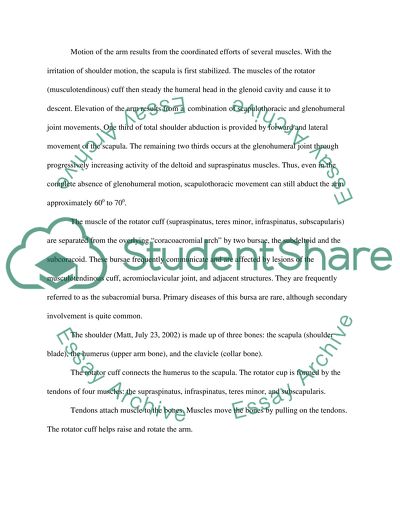Cite this document
(“Rotator cuff tear Essay Example | Topics and Well Written Essays - 3750 words”, n.d.)
Rotator cuff tear Essay Example | Topics and Well Written Essays - 3750 words. Retrieved from https://studentshare.org/miscellaneous/1507277-rotator-cuff-tear
Rotator cuff tear Essay Example | Topics and Well Written Essays - 3750 words. Retrieved from https://studentshare.org/miscellaneous/1507277-rotator-cuff-tear
(Rotator Cuff Tear Essay Example | Topics and Well Written Essays - 3750 Words)
Rotator Cuff Tear Essay Example | Topics and Well Written Essays - 3750 Words. https://studentshare.org/miscellaneous/1507277-rotator-cuff-tear.
Rotator Cuff Tear Essay Example | Topics and Well Written Essays - 3750 Words. https://studentshare.org/miscellaneous/1507277-rotator-cuff-tear.
“Rotator Cuff Tear Essay Example | Topics and Well Written Essays - 3750 Words”, n.d. https://studentshare.org/miscellaneous/1507277-rotator-cuff-tear.


